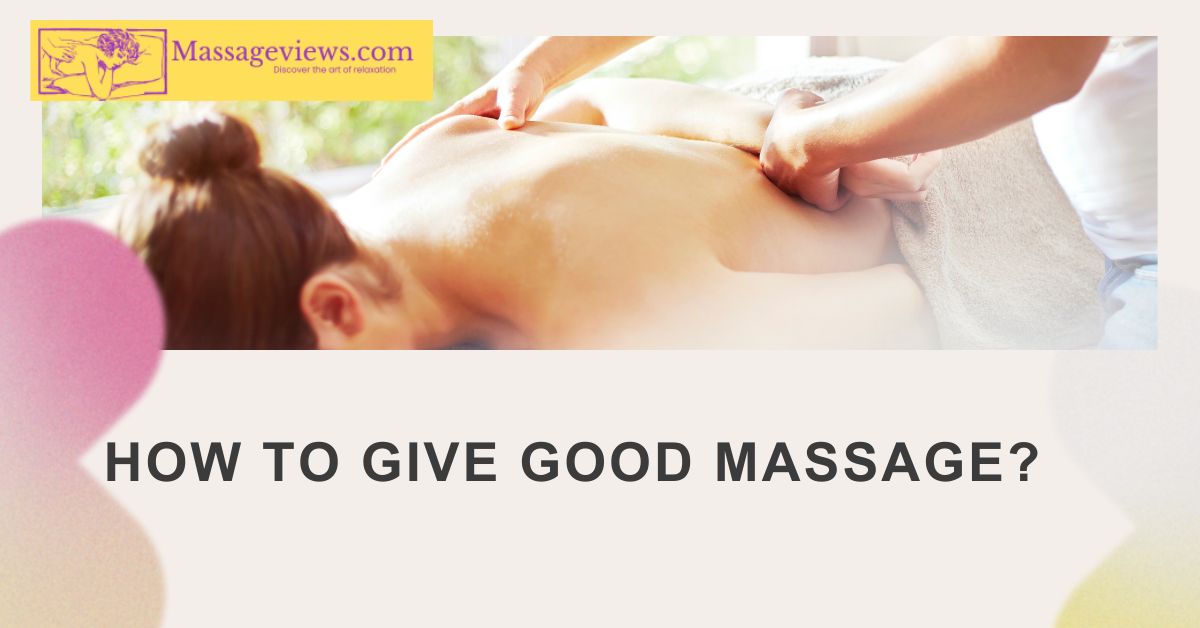Learn the magic of an amazing massage by consulting our guide on How to Give a Good Massage. Take a deep dive into creating a zen atmosphere, learning simple methods, and understanding touch. Understand the techniques that make every massage a fulfilling experience. Let’s make relaxation your superpower!
Table of Contents
Basic Massage techniques

When giving a good massage, it’s all about using a mix of techniques for a relaxing and therapeutic experience.
Let’s break down the basics:
1. Effleurage
Think of this as the warm-up. It’s the first technique used to relax the body and get the blood flowing. The therapist uses gentle, smooth strokes with their fingertips or palms all over the body.
2. Petrissage
This is the deeper massage technique, great for easing muscle tension. It involves kneading and rolling the muscles with the palms of the hands. It helps with circulation, relaxation, and reducing inflammation.
3. Tapotement
This technique stimulates the nervous system and promotes relaxation. Short, repetitive strokes, either with an open palm or clenched fist, are used. The key here is finding the right amount of pressure for effectiveness without causing discomfort.
4. Friction
This is targeted at specific areas with tension or discomfort. Using the thumb, fingers, or palm, the therapist applies pressure in a circular motion to break up adhesions and reduce inflammation.
Some tips for giving a good massage
1. Preparation
Before starting the massage, make sure you have everything you need, including a good massage oil, a towel, and a peaceful environment. Set up the massage area to create a comfortable and relaxing atmosphere.
2. Technique
Pay attention to your massage techniques. Ensure they are appropriate for the individual’s comfort and needs. Be mindful of pressure and rhythm to create a soothing experience.
3. Communication
Talk to the person receiving the message. Ask about their preferences and adjust your technique accordingly. Feedback is key.
4. Aftercare
After the massage, check in with the person. Ensure they’re comfortable, hydrated, and not feeling sore. Provide tips like drinking water or taking a warm bath to maintain the benefits.
Further Reading: What To Expect From The First Massage?
What You’ll require
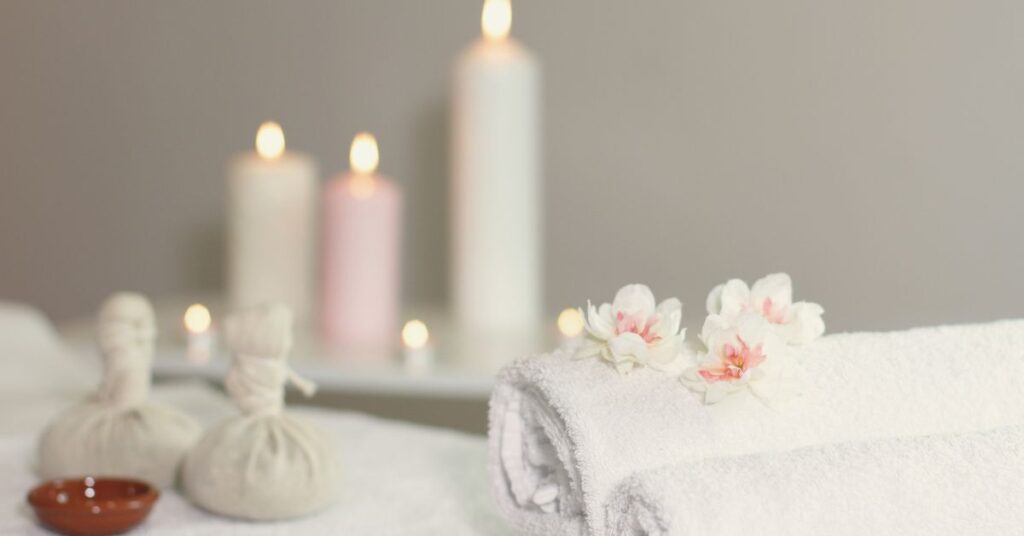
Here are the something to require before Massage
- Choose a Peaceful Room: Minimize distractions. Opt for a quiet room, dim lighting, and peaceful instrumental music to set the mood.
- Massage Table, Bed, or Chair: Essential for a comfortable surface. Adjust the height and angle for the best position.
- A Good Massage Oil: Pick a quality massage oil for smoother movements and added relaxation. It enhances the overall experience.
- Towel: Keep a towel handy for any excess oil and to ensure the person receiving the massage is comfortable.
- Create a Relaxing Environment: Before diving into the massage, set the stage for relaxation. Clear any distractions, tidy up the space, and make sure it’s inviting.
- Dim Lighting: Opt for soft, dim lighting to create a calm ambiance. Avoid harsh overhead lights. Consider using lamps or candles to achieve the right level of coziness.
- Soft Music: Play gentle, instrumental music to enhance the calming atmosphere. Choose tunes without a steady beat to promote tranquility. The right background music can significantly contribute to the overall experience.
- Comfortable Temperature: Ensure the room is at a comfortable temperature. Keep in mind that the person receiving the massage will likely be undressed or partially so, so it’s crucial to maintain a cozy environment.
Targeting Specific Areas
Let’s explore how to target specific areas during a massage:
1: Neck and Shoulders
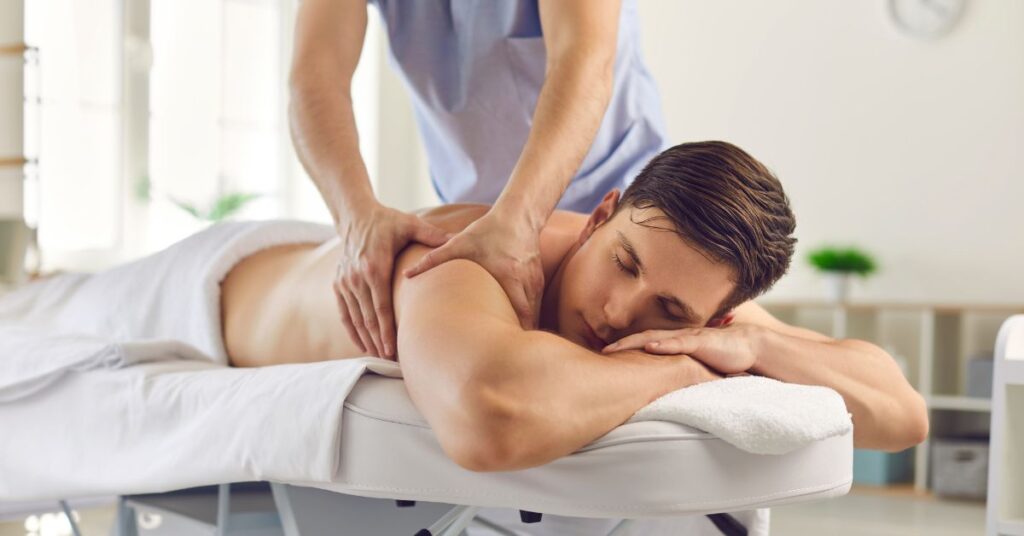
- Use gentle effleurage strokes to warm up the area.
- Gradually incorporate kneading (petrissage) to release tension in the neck and shoulders.
- Pay attention to the trapezius muscles, and use your fingertips and palms for targeted pressure.
- Finish with soothing strokes to promote relaxation.
2: Back
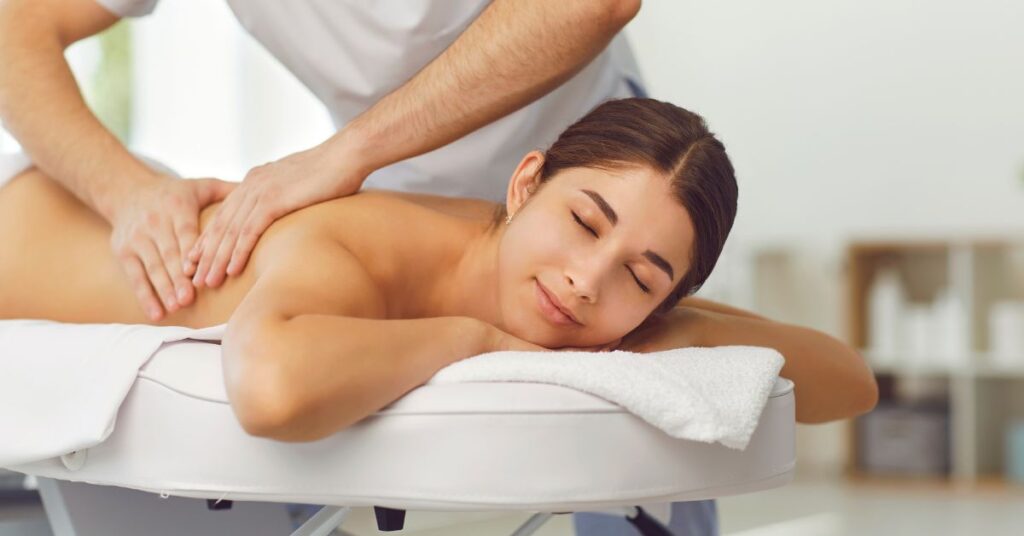
- Begin with effleurage to warm up the entire back.
- Apply petrissage for deeper muscle engagement, focusing on areas of tension.
- Integrate friction for targeted work on specific knots or tight spots.
- Use your body weight for added pressure during kneading movements.
3: Legs and Feet
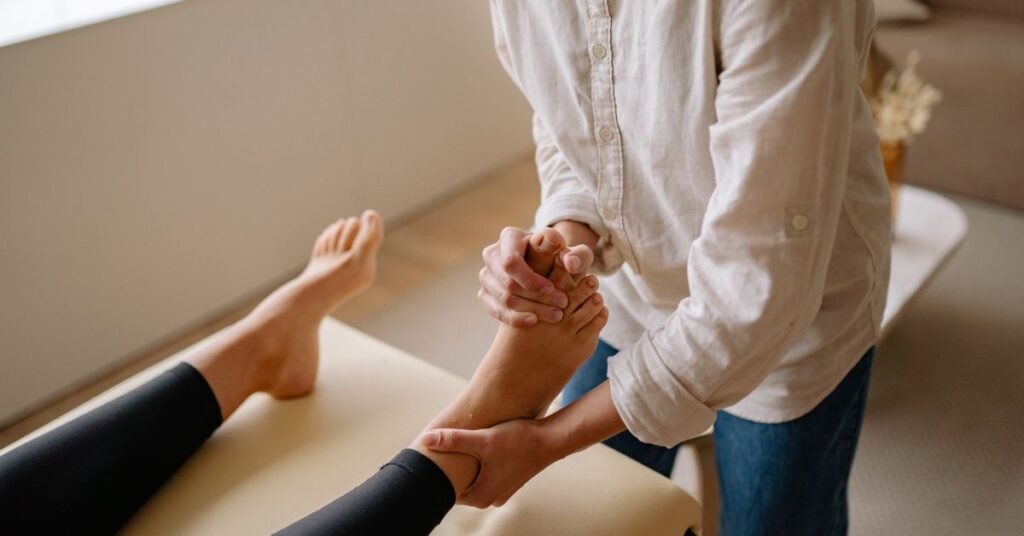
- Employ effleurage to warm up the legs and feet.
- Apply petrissage to work on larger muscle groups like the thighs and calves.
- Use your thumbs and fingers to target specific points on the feet.
- Finish with gentle stretching and rotations of the ankles.
4: Arms and Hands
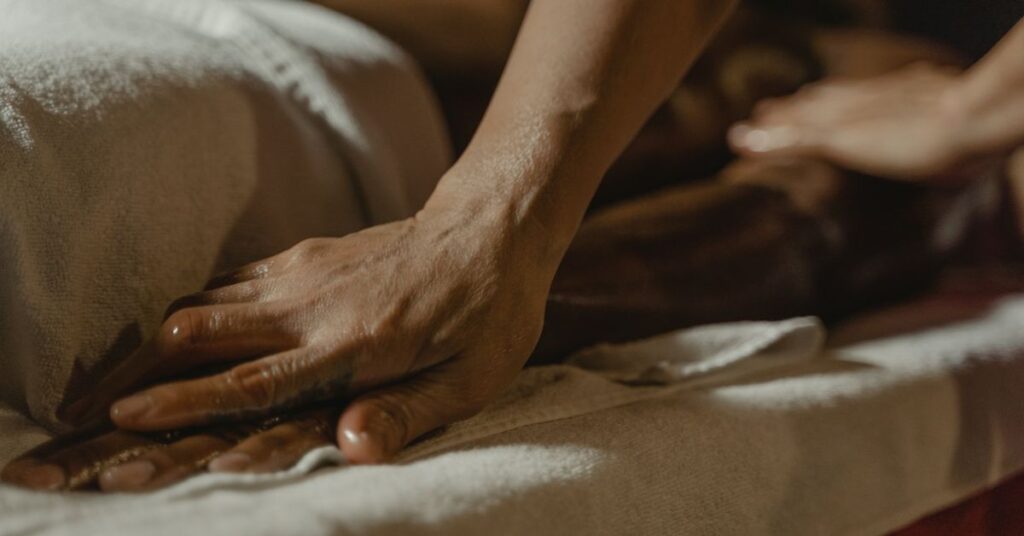
- Start with effleurage to relax the arms and hands.
- Incorporate petrissage to address tension in the forearm and hand muscles.
- Pay attention to the fingers, using gentle movements to release tension.
- Finish with soothing strokes and rotations of the wrists.
5: Scalp and Face
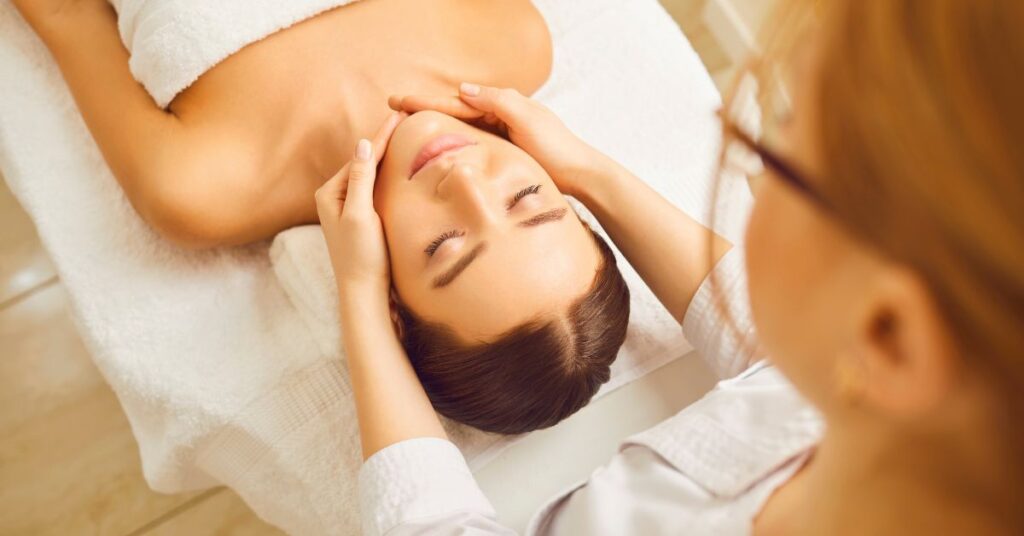
- Use gentle effleurage on the scalp to relax the muscles.
- Employ circular motions with your fingertips to massage the scalp.
- Apply gentle pressure to acupressure points on the face.
- Use soothing strokes on the forehead, cheeks, and jawline.
Adjusting Pressure and Pace
Adjusting pressure and pace is crucial for a personalized and comfortable massage experience.
1: Start with Lighter Pressure and Gradually Increase
- Begin the massage with gentle and light pressure, especially during the initial effleurage strokes.
- Allow the recipient to get accustomed to your touch and gauge their comfort level.
- As the massage progresses, gradually increase the pressure based on the recipient’s feedback.
- Pay attention to any cues, verbal or non-verbal, that indicate the level of comfort.
2: Match the Pace of Your Strokes to the Recipient’s Comfort Level
- Observe the recipient’s response to the pace of your strokes.
- Start with slow and rhythmic movements, particularly during the initial effleurage.
- Pay attention to any signs of tension or relaxation and adjust your pace accordingly.
- If the recipient appears more at ease with a faster pace, you can gradually increase the speed of your strokes.
Further Reading: What is an Asian massage?
Focus on Relaxation
When focusing on relaxation during a massage, consider these key points:
Encourage Deep Breathing
- Guide the recipient to take slow, deep breaths at the beginning of the massage.
- Coordinate your massage strokes with their breathing rhythm.
- Emphasize the importance of relaxation through controlled breathing to enhance the overall experience.
2: Maintain a Calm and Soothing Atmosphere
- Keep the environment quiet and peaceful.
- Ensure the lighting remains soft and the music is calming.
- Speak in a gentle and reassuring tone to contribute to the tranquil atmosphere.
3: Avoid Abrupt Movements or Changes in Pressure
- The transition between massage techniques smoothly to avoid startling the recipient.
- Gradually adjust pressure levels instead of sudden changes.
- Maintain a continuous flow of movements to sustain the relaxation effect.
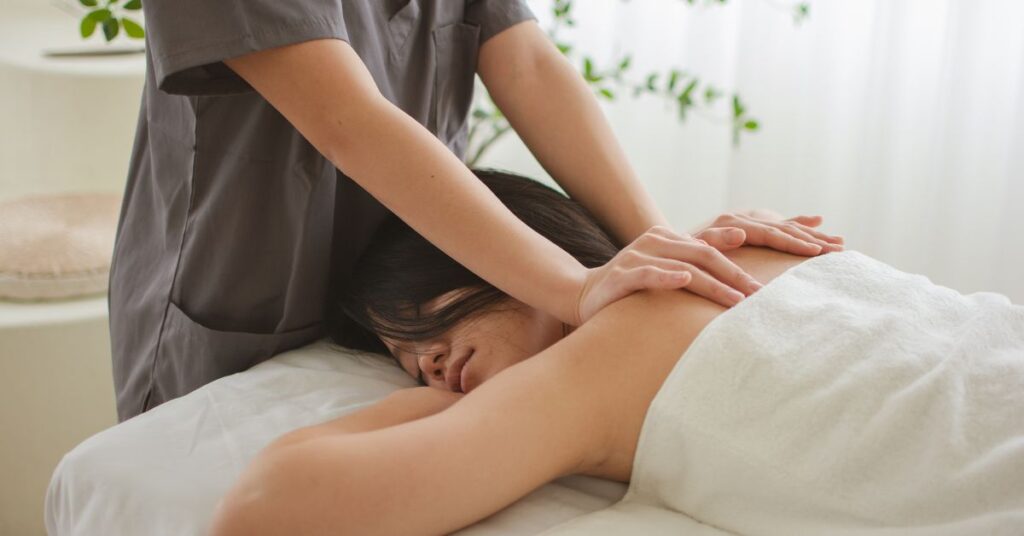
Closing the Massage
1: Gradually Reduce Pressure and Intensity
- As the massage session nears its end, gradually decrease the pressure and intensity of your strokes.
- Transition from deeper techniques to lighter, more soothing movements.
- Signal the winding down of the massage to prepare the recipient for closure.
2: Allow the Recipient Time to Rest and Relax
- After concluding the massage, give the person a few moments of quiet time to absorb the relaxation.
- Offer a comfortable space for them to rest, allowing the effects of the massage to linger.
- Avoid rushing them to get up or engage in any activities immediately after the massage.
3: Offer Water and Check In on Their Comfort Level Post-Massage
- Provide a glass of water to help with hydration, especially if the massage involves the use of oils.
- Check-in on the recipient’s comfort level and inquire about any feedback.
- Address any questions or concerns they may have and offer additional tips for post-massage self-care.
Conclusion
providing a quality massage requires a blend of considerate methods, clear communication, and setting up a soothing atmosphere. Always remember to modify your approach based on the preferences of the person, changing the tempo and pressure as necessary. Start by emphasizing relaxation, promote deep breathing, and keep a serene environment. As the massage comes to an end, release pressure progressively, give the recipient time to relax, and inquire about their comfort.
I hope your massage sessions go well! May the people you massage experience a sense of well-being, comfort, and relaxation from your deft touch. Your soft style, pleasant attitude, and attention to detail will undoubtedly make your massages extremely delightful.
Keep in mind the importance of communication, and may your efforts contribute to the overall health and happiness of those you have the privilege to massage.
FAQ: How to give a good Massage?
Is it necessary to use massage oil?
While it’s not strictly necessary, using massage oil can enhance the smoothness of your strokes and provide additional relaxation. Choose a quality oil and ensure the recipient doesn’t have any allergies or sensitivities.
Can I give a massage without professional training?
Yes, you can provide a basic massage at home with proper guidance and understanding of basic techniques. However, professional training can significantly enhance your skills and ensure a more effective and safe massage.
Can massage help with stress and anxiety?
Yes, massage is often used as a natural way to reduce stress and anxiety. The calming effect of massage can promote relaxation and help alleviate tension.
